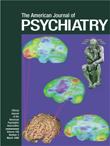It is fair to say that the dominant approach to diagnosis, research, and treatment in North American psychiatry has been “syndromal.” Patients are evaluated to determine if they exhibit the required number of symptoms or signs for a disorder and treated with whatever medication is currently recommended. Those recruited for research are lumped into groups and studied, typically with fixed batteries of psychological and neurobiological tests. Because groups formed in this way are heterogeneous, large samples must be studied to attain statistical significance. At best, the “average” patient defined by using this approach will be a blunt and depersonalized image of the real patients; at worst, the average patient will not resemble any of the real patients.
As an alternative, the editors of Method in Madness present a series of case studies of patients who exemplify the consequences of breakdown of four kinds of knowledge: self-identity, the identity of others, the constancy of places, and the determinants of personal beliefs. The authors of each of the case studies do an excellent job of describing the patients in detail, including well-selected transcriptions of interviews. As a consequence, the reader can appreciate what it is like to suffer from a delusion and can also formulate some hypotheses about the origins of the delusional thinking. This is a significant strength of the book; used in a seminar, it could stimulate thinking about issues in psychopathology that are rarely discussed in modern psychiatry and psychology classes, dominated as they are by issues of neurobiological mechanisms, pharmacology, neurogenetics, and statistical analyses.
A second strength is that the use of cognitive neuropsychology, both as a source of theories about psychopathological thought and as a method for testing hypotheses, is well illustrated in several chapters. In general, the authors present this material very clearly, so that a background in neither cognitive psychology nor clinical neuropsychology is necessary. In fact, readers who are familiar with standard neuropsychological batteries may be amazed to learn how much can be discovered with specialized “home-made” tests designed to answer a question relevant to a particular patient.
Several of the cases involve patients with identified brain damage. The authors do a good job of presenting the anatomical findings in relatively simple terms so that a motivated reader with little or no training in neuroanatomy can follow. Readers with more experience in neurology and neuroscience may yearn for more detail concerning the precise extent and location of the lesions. They may be disappointed because this is a book about disorders of knowledge of individual patients, analyzed mainly from the perspective of cognitive psychology.
In summary, Method in Madness is a welcome addition to the neuropsychiatric literature. It succeeds in demonstrating that the individual patient, carefully studied from the multiple vantage points of neurology, psychiatry, and psychology, can provide valuable scientific evidence. The book is so clearly written that it could be used in advanced undergraduate classes as well as seminars for psychiatry and clinical psychology students and residents.

